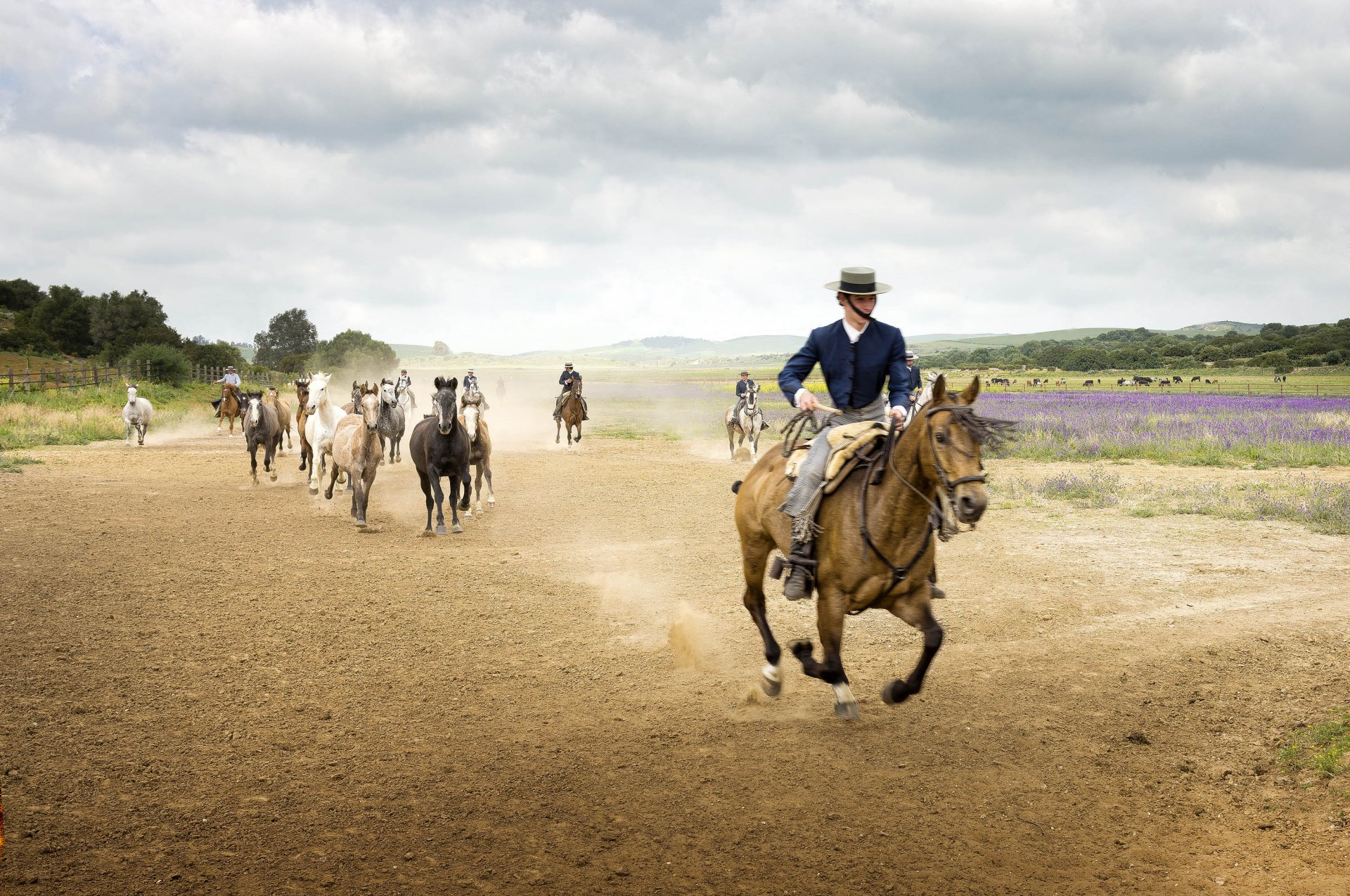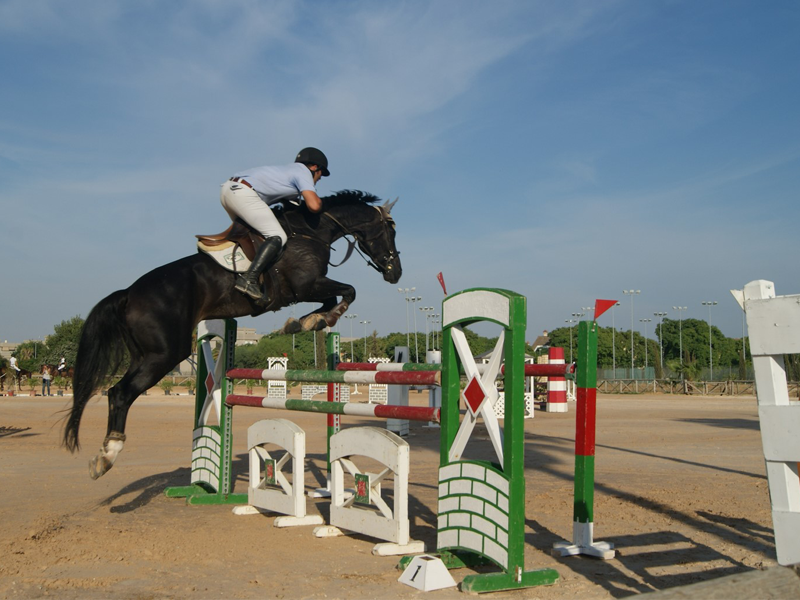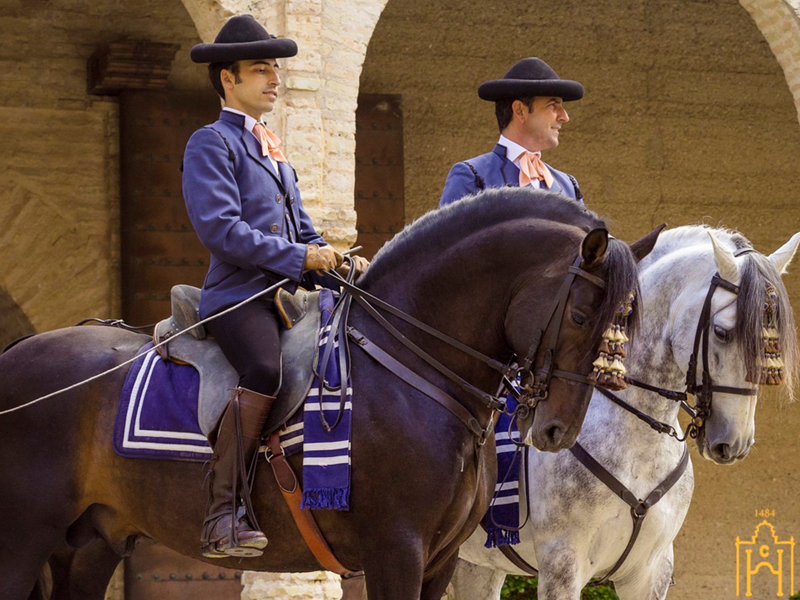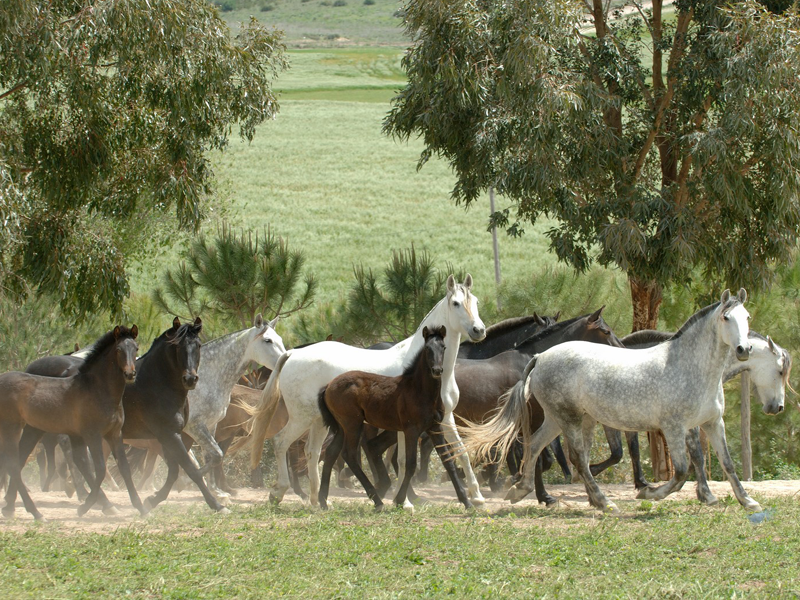Without doubt, Jerez is the Spanish city where the horse is held in the highest esteem. There are numerous horse breeding farms, mare stables, visitor and equestrian centers which are involved in the raising and equine selection where the figure of the horse acquires the character of the indisputable protagonist of its most deep rooted expressions and traditional festivals.
Jerez offers a wide variety of resources and tourist services related to the equestrian world, as much for the lovers of horses who want to know them more deeply as for those who want to practice riding in different activities and equestrian disciplines.
The town also offer the possibility to contemplate the horse trotting in the freedom of its countryside, of the highly trained rider showing his skills in the horse shows, of the horse which joins in harnessed to fairs and pilgrimages, of the pleasant horse and carriage rides through the city; you can learn the history of the horse through the equestrian museums, enjoy a horse or pony ride in the natural surroundings of Jerez, learn to ride, acquire all kinds of things related to the horse etc...









